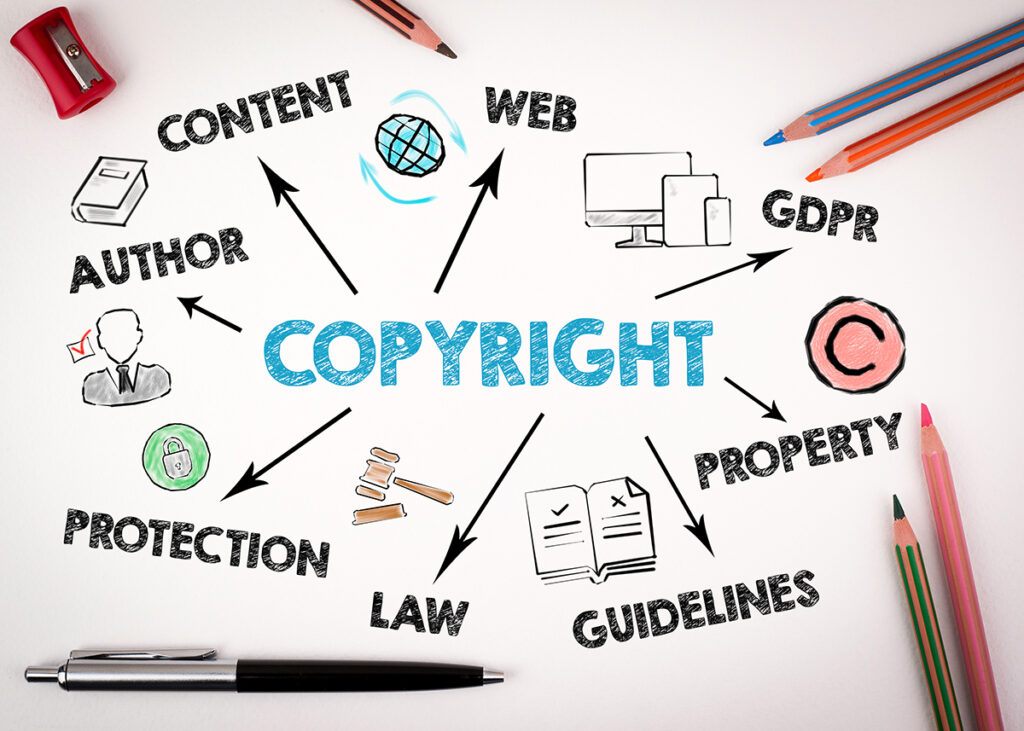Pros and Cons of Drag-and-Drop Website Builders

In the fast-paced digital age, having a strong online presence is crucial for businesses and individuals alike. Thanks to advancements in web development, creating a website is no longer a task reserved for coding experts. Drag-and-drop website builders have emerged as a popular solution, offering an easy and accessible way to build websites without in-depth technical knowledge. However, like any tool, they come with their own set of advantages and drawbacks. In this blog post, we will explore the pros and cons of drag-and-drop website builders to help you decide whether they are the right choice for your web development needs. Pros: Cons: In conclusion, drag-and-drop website builders are an excellent choice for individuals and small businesses looking for a simple, cost-effective way to establish an online presence. However, they may not be suitable for complex, highly customized, or rapidly growing websites. It’s essential to weigh the pros and cons carefully and consider your long-term goals when deciding whether to use a drag-and-drop builder or a more traditional, custom-coded website. Ultimately, the right choice will depend on your specific needs and level of expertise.
Keeping Your Website Content Fresh: It’s Never Truly ‘Finished

In the dynamic world of the internet, your website should be viewed as a living entity that evolves and adapts over time. Just because your website is “done” doesn’t mean it’s finished. To keep your online presence relevant, engaging, and practical, it’s crucial to refresh and update your content consistently. In this blog post, we’ll explore why maintaining fresh content is vital and provide helpful tips on how to do it effectively. 1. The Importance of Fresh Content Imagine your website as a virtual storefront. Would you want to visit a store with dusty shelves and outdated products? The same principle applies to your website. Here are some compelling reasons why keeping your content fresh matters: A. SEO Benefits: Search engines, like Google, reward websites that regularly update their content with higher rankings. Fresh content indicates your website is active and relevant, which can improve your search engine optimization (SEO) efforts. B. User Engagement: Outdated content can bore your visitors and deter them from returning. Fresh content keeps users engaged, encourages repeat visits, and leads to a more positive user experience. C. Authority and Trust: Consistently updating your content demonstrates your commitment to staying current and relevant in your field, establishing your website as a trusted source of information. 2. Strategies for Keeping Content Fresh Now that we understand the importance of maintaining fresh content, let’s delve into some strategies to accomplish this: A. Regular Blog Posts: Create a blog or news section on your website and commit to posting regular updates. Share industry insights, company news, and helpful tips to keep your audience informed and engaged. B. Content Calendar: Plan your content updates using a content calendar. This ensures you have a steady stream of fresh content and prevents lapses. C. Evergreen Content: Balance timely posts with evergreen content. Evergreen content addresses timeless topics that remain relevant, offering lasting value to your audience. D. Update Existing Content: Revisit and refresh older posts, pages, or articles. Update statistics, reformat for readability, and add new information to keep the content current. E. Multimedia Elements: Incorporate different types of content, such as videos, infographics, and podcasts, to diversify your content and appeal to a broader audience. F. User-Generated Content: Encourage user-generated content, such as comments, reviews, or guest posts, to keep your website interactive and demonstrate a community of engaged users. G. Social Media Integration: Promote your fresh content on social media platforms to expand your reach and attract more visitors to your website. 3. Analytics and Feedback To ensure your efforts to keep content fresh are effective, use website analytics tools to track visitor engagement, page views, and conversion rates. Pay attention to feedback from your audience through comments, emails, and social media. These insights will help you refine your content strategy over time. Conclusion Remember, the concept of a “finished” website is obsolete. To thrive online, you must continuously update and refresh your content. By doing so, you’ll improve your SEO rankings and engage your audience, establish trust, and remain a credible source of information in your field. Treat your website as a living entity, and it will reward you with increased traffic and improved online success.
The Power of Blogging: Why Having a Blog Is Essential for Your Website

In today’s digital age, having a strong online presence is crucial for businesses and individuals alike. A well-crafted website is the cornerstone of this presence, but a powerful tool often goes underestimated: a blog. In this blog post, we’ll explore why having a blog is essential for your website and how it can drive numerous benefits for your online presence. In conclusion, having a blog is not just a good idea; it’s essential for your website’s success. A well-maintained blog can drive traffic, establish authority, foster engagement, amplify your brand, generate leads, and even provide revenue opportunities. So, if you want to boost your online presence and reap the many benefits that come with it, start blogging today. Your website and your audience will thank you for it.
Unlocking Security: The Power of Password Managers

In the digital age, where nearly every aspect of our lives is interconnected through the web, the importance of online security cannot be overstated. Cyber threats are rampant, and the weakest link in the chain is often a simple, easily guessable password. In this era, the power of password managers shines brightly as a beacon of digital security, making our online lives safer and more convenient. The Password Conundrum The average person has countless online accounts, each requiring a unique and robust password. Remembering all these passwords is an impossible task for the human brain. Consequently, many people resort to using simple passwords, reusing them across multiple sites, or even writing them down, which compromises security. This is where password managers come into play. What Is a Password Manager? A password manager is a specialized software or service designed to securely store, generate, and autofill passwords for various websites and applications. Using a master password, the user can access a secure vault containing all their login credentials. Here’s why password managers are powerful: 1. Enhanced Security Password managers can generate complex, unique passwords for each of your accounts. These passwords are typically long and include letters, numbers, and symbols. With no need to remember them, there’s no temptation to choose easily guessable passwords or reuse them across different platforms. 2. Single Sign-On A master password is the only password you need to remember. Once you’ve unlocked your password manager, it automatically fills in your login information, streamlining the login process. This eliminates the hassle of typing in complex passwords manually, reducing the likelihood of mistakes and increasing overall security. 3. Encrypted Storage Password managers store your login credentials in encrypted form. Even if someone were to gain access to your vault, they would need your master password to decrypt and use the information. This multi-layered security makes it exceedingly difficult for hackers to compromise your accounts. 4. Cross-Device Accessibility Most password managers offer browser extensions and mobile apps, ensuring your passwords are accessible on all your devices. This convenience allows for seamless and secure access to your accounts, whether you’re at your computer or on your smartphone. 5. Password Health and Alerts Password managers often include features that assess the security of your passwords. They can identify weak or compromised credentials and provide alerts for breaches on websites where you have accounts. This proactive approach enables users to strengthen their online security continuously. 6. Time-Saving and Convenience One of the most significant advantages of password managers is the time and effort they save. Users no longer need to go through the tiresome process of creating, remembering, or recovering passwords. This extra convenience improves the overall online experience. Conclusion In the age of frequent data breaches and cyberattacks, password managers are a necessary tool to bolster your online security. Their power lies in their ability to simplify and enhance the way we manage our digital identities. With password managers, you can enjoy the convenience of easy logins without compromising on security. So, take the first step towards securing your digital life and unlock the full potential of password managers today. Your online accounts will thank you.
Copyright Infringement Prevention for Websites and Blog Posts

Introduction The internet has become a treasure trove of information and creativity in the digital age. However, it has also brought about new challenges, including the rampant issue of copyright infringement. For website owners and bloggers, it’s essential to understand the importance of copyright protection and how to prevent unintentional infringement. In this blog post, we’ll explore copyright infringement prevention strategies to help you stay on the right side of the law and protect your intellectual property. Understanding Copyright Before diving into prevention strategies, it’s crucial to grasp the basics of copyright. Copyright is a form of legal protection granted to creators of original works, such as text, images, music, and videos, giving them exclusive rights to reproduce, distribute, and display their work. This protection is automatic upon creation and doesn’t require formal registration. Creating and using original content is the simplest way to prevent copyright infringement. This applies to text, images, videos, and other media on your website or blog. When you make your content, you retain complete control, eliminating the risk of using someone else’s work without permission. If you wish to use content created by others, ensure you have the necessary licenses or permissions. Creative Commons licenses, for example, allow creators to share their work with specific usage conditions. Always respect the terms of these licenses and provide proper attribution when required. Understand the concepts of “public domain” and “fair use.” Public domain works are not protected by copyright and can be freely used. Fair use allows limited use of copyrighted material without permission for purposes like criticism, commentary, news reporting, and education. However, it’s essential to understand the legal nuances of fair use and apply it correctly. Ensure you provide accurate attribution when you use someone else’s work with permission or under a Creative Commons license. This respects the creator’s rights and builds goodwill within the creative community. If you’re referencing or discussing copyrighted material, linking to the source is a good practice. This gives credit and directs your audience to the original content, promoting transparency. Some numerous websites and resources offer public domain content, which can be used without restrictions. These can be a valuable source of images, text, and other media for your blog or website. A Digital Millennium Copyright Act (DMCA) policy is a legal framework that helps protect website owners from copyright infringement claims. By having a clear DMCA policy and a designated agent to handle infringement claims, you demonstrate your commitment to addressing copyright issues. Continuously monitor your website or blog for any potential copyright infringements. Search for instances where your content might have been copied without permission. Various online tools are available to help you track and detect unauthorized use of your work. Conclusion Copyright infringement prevention is essential for website owners and bloggers to protect their intellectual property and respect the rights of others. By understanding copyright laws, using original content, obtaining permissions when necessary, and implementing best practices, you can create a digital space that respects creative works while safeguarding your own. Ultimately, a responsible and ethical approach to content creation and usage benefits both creators and consumers in the digital world.
The Power of Color Psychology in Marketing

When it comes to marketing, every detail matters. From the words you choose to the design of your logo, every element plays a role in how your brand is perceived. One often overlooked but highly influential aspect of marketing design is color. Color psychology in marketing is a powerful tool that can shape consumer perceptions, emotions, and decisions. In this post, we’ll dive into the fascinating world of color psychology and how it can be harnessed to boost your marketing efforts. Understanding Color Psychology Color psychology studies how colors can impact human emotions, behaviors, and perceptions. It’s a field explored by psychologists, marketers, and designers alike. The idea is simple: different colors can evoke different feelings and associations in people. Understanding these associations can help you make more informed choices in your marketing materials. Red: Passion and Urgency Red is a color that grabs attention immediately. It’s associated with passion, love, and excitement. In marketing, red is often used to create a sense of urgency, which can be particularly effective in sales and promotions. Fast-food chains like McDonald’s and KFC use red branding to stimulate appetite and encourage quick decisions. Blue: Trust and Stability Blue exudes trust, reliability, and professionalism. It’s a favorite for financial institutions, tech companies, and healthcare providers. Blue can help create a sense of security and competence, making customers feel more comfortable doing business with you. Green: Health and Growth Green is closely linked to nature, health, and growth. Eco-friendly and organic brands commonly use it to convey a commitment to the environment. Additionally, green can represent financial growth and prosperity, making it popular among investment and financial planning firms. Yellow: Optimism and Clarity Yellow radiates positivity, optimism, and clarity. It’s often used to catch attention and highlight important information. Brands like Ikea and Best Buy incorporate yellow into their logos and marketing materials to create a cheerful and approachable image. Black: Sophistication and Luxury Black is synonymous with sophistication and luxury. High-end brands like Chanel and Rolex frequently use black to convey exclusivity and elegance. It’s a color that signifies prestige and quality. Orange: Energy and Creativity Orange combines the energy of red with the cheerfulness of yellow. It’s a color that exudes excitement and creativity. Brands like Nickelodeon and Fanta use orange to appeal to a youthful and energetic audience. How to Use Color Psychology in Marketing Understanding the emotional impact of colors is one thing, but successfully incorporating them into your marketing materials is another. Here are some tips to get you started: Conclusion Color psychology in marketing is a fascinating and effective tool that can significantly impact how consumers perceive your brand. By understanding the emotions and associations tied to different colors, you can create marketing materials that resonate with your audience on a deeper level. So, the next time you’re designing a logo, website, or promotional campaign, remember the power of color psychology and use it to your advantage.
Parker Web’s Magic Touch: Transforming Your Website in Just 15 Minutes

Time is precious, especially in the digital realm. As the digital world accelerates, small business owners are often left feeling that website enhancements need endless hours and extensive budgets. However, with Parker Web, that’s not the case. Here’s what our expert team can achieve for your business website with a 15-minute commitment. 1. Swift Content Revitalization What is your latest achievement, product launch, or company update? Let us craft a concise and engaging post or news update for your website, making it timely and relevant. 2. Instant Image Refresh Our design team, equipped with an extensive library of high-quality images and an eye for aesthetics, can promptly replace outdated graphics. Give your website that modern look in a quarter of an hour. 3. Inserting Credibility Boosters Hand us your recent customer praises, and watch as we elegantly weave them into your site. We’ll position these testimonials where they can have maximum impact, showcasing the trustworthiness of your business. 4. Mobile Responsiveness Check In a quick 15-minute scan, we can assess the mobile responsiveness of your site, ensuring it’s up to the mark. We’ll provide immediate recommendations for any potential areas of enhancement. 5. Quick Analytics Insight Our expertise in platforms like Google Analytics allows us to extract valuable insights about your site’s performance in no time. Understanding visitor behavior becomes simple with Parker Web. 6. A Sprinkle of SEO Magic Our SEO wizards will optimize a page or article on your site, incorporating vital keywords, enhancing meta descriptions, or adding image alt texts. All aimed to increase your visibility on search engines. 7. Social Media Integration We’ll ensure your website boasts the latest social links and active feeds. Should you branch out to a new social platform, trust that we can seamlessly integrate it into your digital space. Conclusion Website transformation doesn’t always require hours or days. With Parker Web, even a 15-minute engagement can bring noticeable, value-driven changes to your online presence. So when you think of time, remember it’s not just the duration but the expertise that counts. Let’s make every minute impactful with Parker Web.
Understanding Google PageSpeed Insights: A Guide to Faster and More User-Friendly Websites

In today’s digital age, the speed at which your website loads is critical in user satisfaction, search engine rankings, and overall online success. Slow-loading websites can drive visitors away and harm your online visibility. That’s where Google PageSpeed Insights comes into play. In this guide, we’ll explore what Google PageSpeed Insights is and how it works to help you optimize your website’s performance. What is Google PageSpeed Insights? Google PageSpeed Insights is a free online tool provided by Google that evaluates the performance of a web page and offers suggestions for improvement. It provides valuable insights into how well your website loads on mobile and desktop devices. The tool generates a score from 0 to 100, indicating the overall performance of your web page. How Does Google PageSpeed Insights Work? Google PageSpeed Insights assesses your website’s performance using a variety of factors and metrics. Here’s a breakdown of how it works: Why Should You Use Google PageSpeed Insights? Improving your website’s performance with the help of PageSpeed Insights has several benefits: Conclusion Google PageSpeed Insights is a valuable tool for website owners and developers looking to enhance their web page’s performance. Analyzing your site, providing actionable recommendations, and offering insights into user experience empowers you to create faster, more user-friendly websites that rank better in search results and convert more visitors. So, if you haven’t already, give Google PageSpeed Insights a try today and start optimizing your website for success in the digital world.
The Power of Building A Strong Brand

In today’s competitive business landscape, creating a strong brand is essential for long-term success. Your brand is not just a logo or a catchy tagline; it’s the essence of your business, the perception that customers have, and the promise you deliver. Here are some key benefits of investing in and nurturing a strong brand: 1. Recognition and Recall A strong brand is easily recognizable and memorable. Think about iconic logos like Apple’s apple or Nike’s swoosh. These symbols instantly connect with their respective brands, making them stand out in a crowded marketplace. When customers can easily recognize and recall your brand, it increases the likelihood of them choosing your products or services. 2. Trust and Credibility Trust is the foundation of any successful business relationship. A strong brand builds trust with its audience by consistently delivering on its promises. When customers know what to expect from your brand and have positive experiences, they are more likely to trust your business. Trust, in turn, leads to customer loyalty and repeat business. 3. Competitive Advantage In a competitive market, a strong brand sets you apart from your competitors. It gives you a unique identity and positioning that makes it difficult for others to replicate. Customers often choose brands they trust and identify with, even if there are similar alternatives available. This competitive advantage can translate into increased market share and higher profits. 4. Customer Loyalty A strong brand cultivates customer loyalty. When customers have a positive emotional connection with your brand, they are more likely to become repeat buyers and brand advocates. Loyalty programs, personalized experiences, and excellent customer service can all strengthen this bond and keep customers coming back. 5. Premium Pricing A well-established and trusted brand can command premium pricing for its products or services. Customers are often willing to pay more for a brand they know and trust because they perceive it as offering higher quality and reliability. This can lead to increased profitability and a healthier bottom line. 6. Flexibility and Expansion A strong brand can expand into new markets and product categories more easily. Customers who trust your brand in one area are more likely to try your offerings in others. For example, if you’ve built a strong brand in athletic shoes, branching out into sportswear or accessories becomes a natural progression. 7. Employee Pride and Engagement Your brand isn’t just for customers; it also impacts your employees. A strong brand can instill a sense of pride and purpose among your workforce. When employees believe in the brand and its values, they are more engaged and motivated, leading to better productivity and a positive workplace culture. Conclusion Building a strong brand is a long-term investment that pays off in many ways. It’s not just about aesthetics; it’s about creating a lasting impression, fostering trust, and standing out in a competitive market. Whether you’re a small startup or an established corporation, the benefits of a strong brand are undeniable and can propel your business to new heights. So, invest the time and resources needed to build and nurture your brand—it’s a strategy that will pay dividends for years to come.
It’s Time We Fix the Unethical Design of Cookie Consent Windows

Introduction In today’s digital age, the internet is an integral part of our daily lives. Whether shopping, reading the news, or simply browsing for information, websites collect data about our online behavior. Websites often present us with cookie consent windows to comply with privacy regulations. However, the design and implementation of these consent prompts have raised concerns about ethics and user consent. This blog post will delve into the issues surrounding cookie consent windows and why addressing these concerns is high time. The Cookie Conundrum Cookies, small pieces of data stored on our devices, serve various purposes on websites, from enhancing user experience to tracking user behavior for marketing and analytics. As a result, websites must obtain user consent before deploying these cookies, a requirement enforced by regulations like the General Data Protection Regulation (GDPR) and the California Consumer Privacy Act (CCPA). While the intentions behind these regulations are noble, the way many websites implement cookie consent leaves much to be desired. Here are some common issues: The Ethical Imperative The ethical issues surrounding cookie consent windows are apparent. Designing these prompts to trick or manipulate users into sharing their data violates their privacy and erodes trust in websites and online services. Ethical design should prioritize user understanding and choice. It’s essential to consider the following principles when designing cookie consent prompts: A Way Forward So, how can we address these ethical concerns surrounding cookie consent windows? Conclusion Cookie consent windows are a critical component of online privacy, and fixing their unethical design is crucial. The internet should be a space where users can make informed decisions about their data. By adhering to ethical design principles, embracing transparency, and giving users real choices, we can ensure that cookie consent prompts respect user privacy and foster trust in the digital ecosystem. It’s time for a paradigm shift in how we approach the design of these consent windows, putting the user’s rights and interests first.
